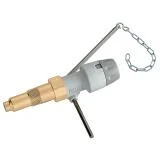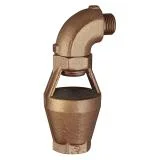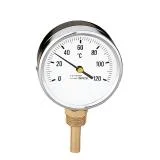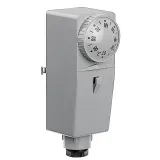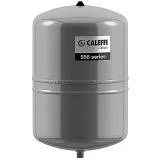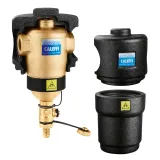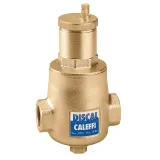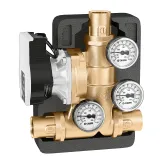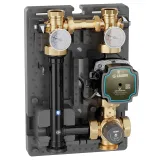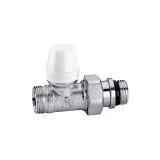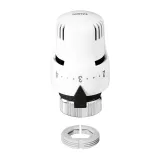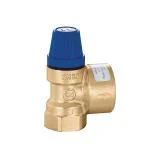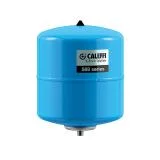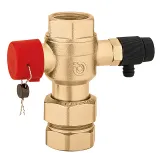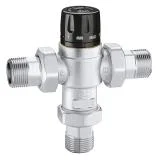
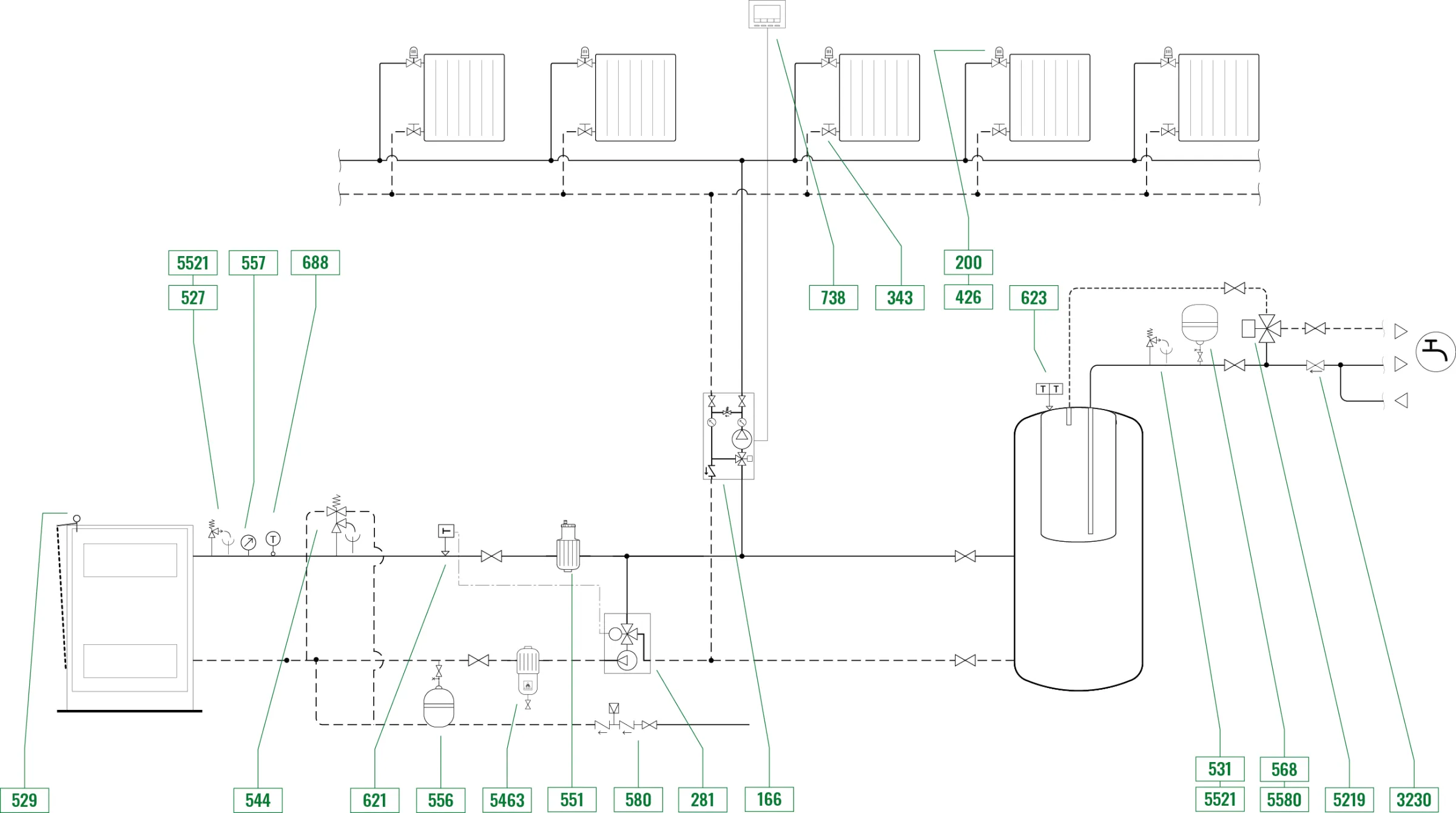
The system can be divided into 3 zones:
Biomass boiler zone
This consists of a biomass boiler with automatic air supply, fitted with the following components:
- Control, expansion, safety and heat discharge equipment
- Regulation and safety thermostats
- Temperature gauges and pressure regulation indicators
- Automatic charging unit
- Anti-condensation circulation unit with the following components: anti-condensation thermostatic sensor, circulation pump, natural circulation clapet valve, built-in ball valves and verification temperature gauges
- Distribution and thermostatic regulating unit
- Water treatment devices (dirt separator and deaerator) for the protection of generators and, more generally, all closed system components
The hot medium is used both to produce domestic hot water and to supply the radiators.
When the water temperature exceeds the minimum value required by the boiler, the anti-condensation circulation unit pump is activated via the contact thermostat.
The layout is suited to small systems as the anti-condensation unit head is limited.
This configuration can also be applied in medium-large systems; in this case the devices for closed vessel systems should not be installed.
DHW production zone with tank-in-tank storage
The thermostat installed on the domestic hot water storage tank inhibits the booster unit so that it takes precedence over heating. The anticipated distribution system is without recirculation and is equipped with a thermostatic mixing valve with strainers and check valves built into in the hot and cold water inlet connections.
Heating zone
Thermostatic control heads must be fitted to the radiators and the room must have a chrono-thermostat for controlling the distribution unit.
Note:
The control, expansion and safety equipment must be of appropriate size to reflect the heating capacity and specific characteristics of the system, in accordance with applicable laws and regulations. The electrical connections must be assessed in liaison with the relevant organisations in order to fulfil operational and regulatory requirements.
Plus, in the case of high water hardness values or if so required by current legislation or by the boiler manufacturer, a specific water treatment system must be installed.
